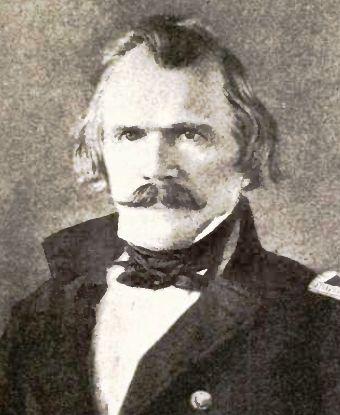Last updated: June 17, 2015
Person
Albert Sidney Johnston

Though considered at the outset of the war as one of the most promising commanders, North or South, Albert Sidney Johnston's service was brief and his vast potential unrealized. The Kentucky-born Johnston was appointed to West Point from Louisiana and graduated eighth in the class of 1826. After eight years of service he resigned to care for his terminally ill wife. A failure at farming, he went to Texas and joined the revolutionary forces as a private. Within a year, he had risen through the ranks as the force's chief commander and senior brigadier general.
He served as Secretary of War in the Republic of Texas and commanded the 1st Texas Rifles in the Mexican War. Reentering the United States army in 1849 as a major and paymaster, he became colonel in 1855. For his services in the 1857 campaign against the Mormons in Utah he was brevetted brigadier general. He resigned his commission on April 10, 1861, but did not quit his post on the West Coast until his successor arrived.
Relieved of his command, he began the long trek to Richmond overland. Meeting with Jefferson Davis, he entered Confederate service on August 30, 1861 as a full general and the second ranking officer in the Confederacy. He was given command of all Confederate troops west of the Allegheny Mountains where he attempted to implement a strategy of utilizing isolated commands to hold points withing the invaded Confederate states.
Establishing a line of defense in Kentucky from the Mississippi River to the Appalachians, he held it until it was broken at Mill Springs in January and at Forts Henry and Donelson in February 1862. Abandoning Kentucky and most of Tennessee, he fell back into northern Mississippi where he concentrated his previously scattered forces.
In early April he moved against Ulysses S. Grant's army in Tennessee, surprising the Federals with an attack near Pittsburg Landing and driving them back, in what would become the Battle of Shiloh. While directing frontline operations he was wounded in the leg, likely by friendly fire. Not realizing the seriousness of his wound, he sent his personal physician to attend to some captured Union soldiers, and he bled to death, the highest ranking officer of either side killed during the war.
